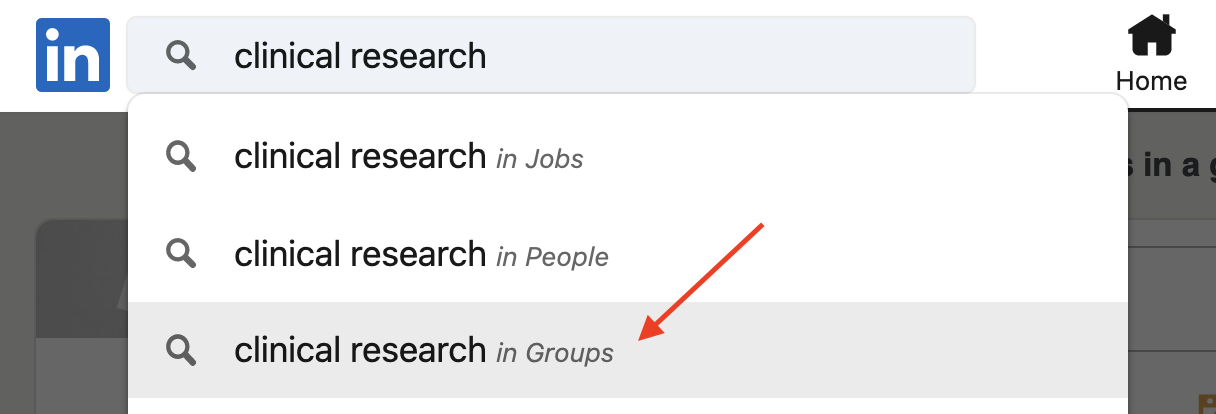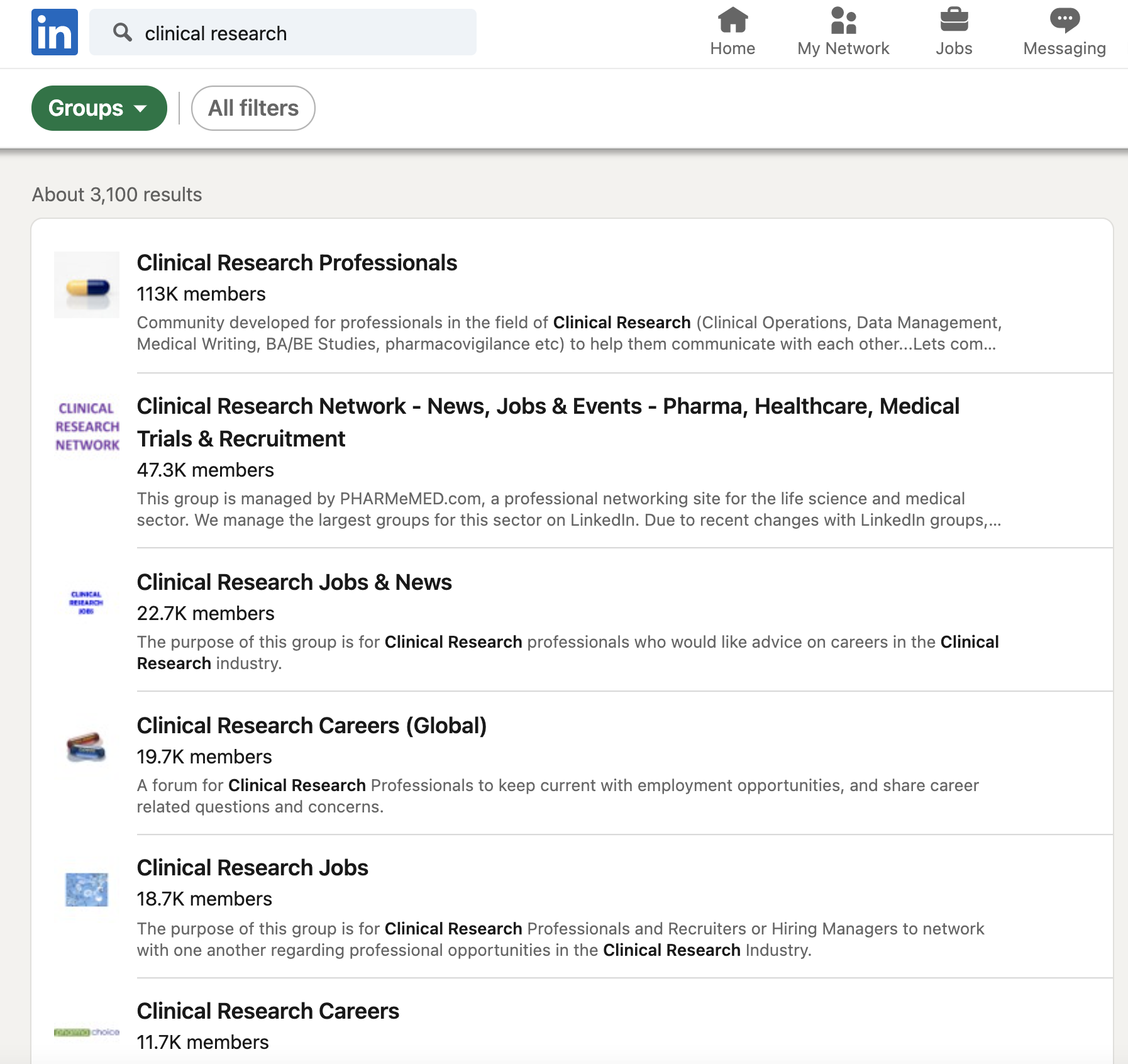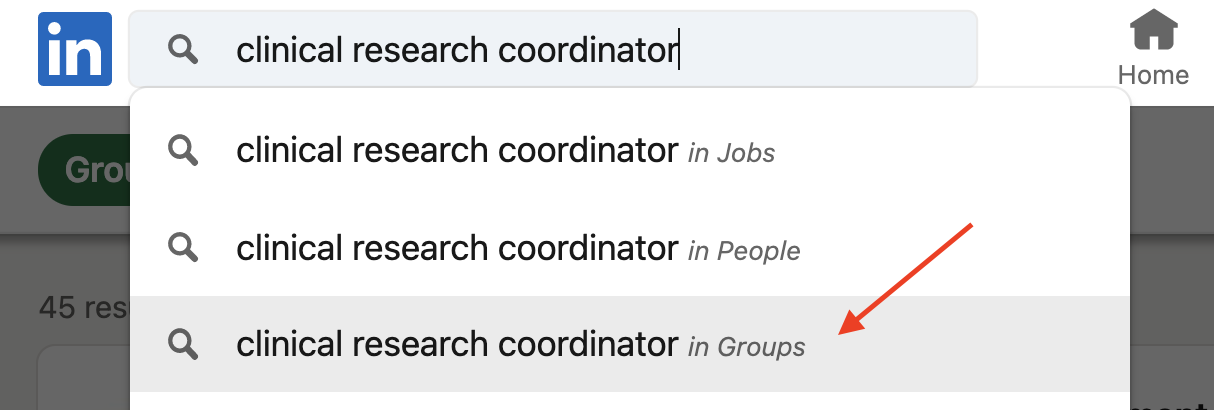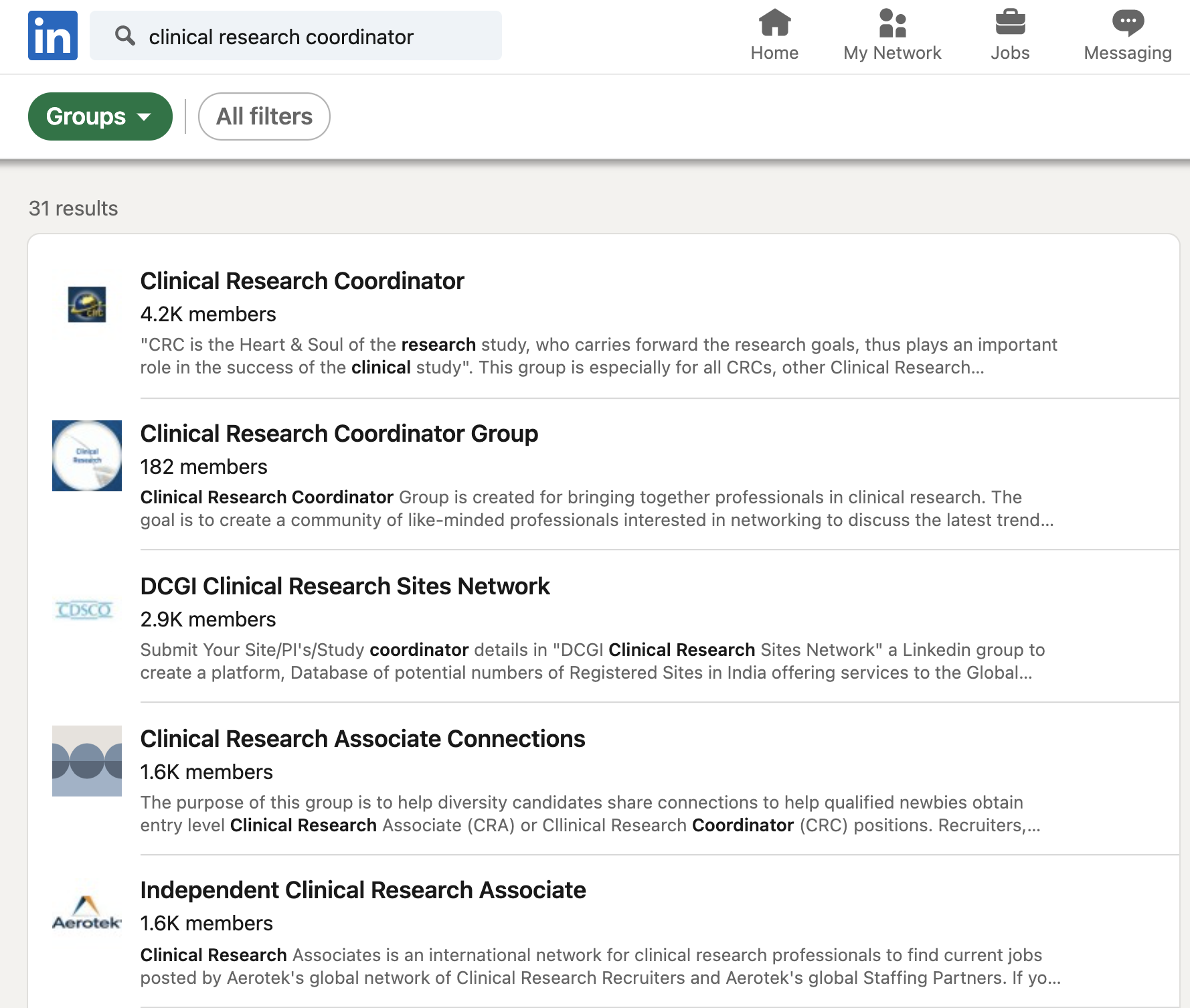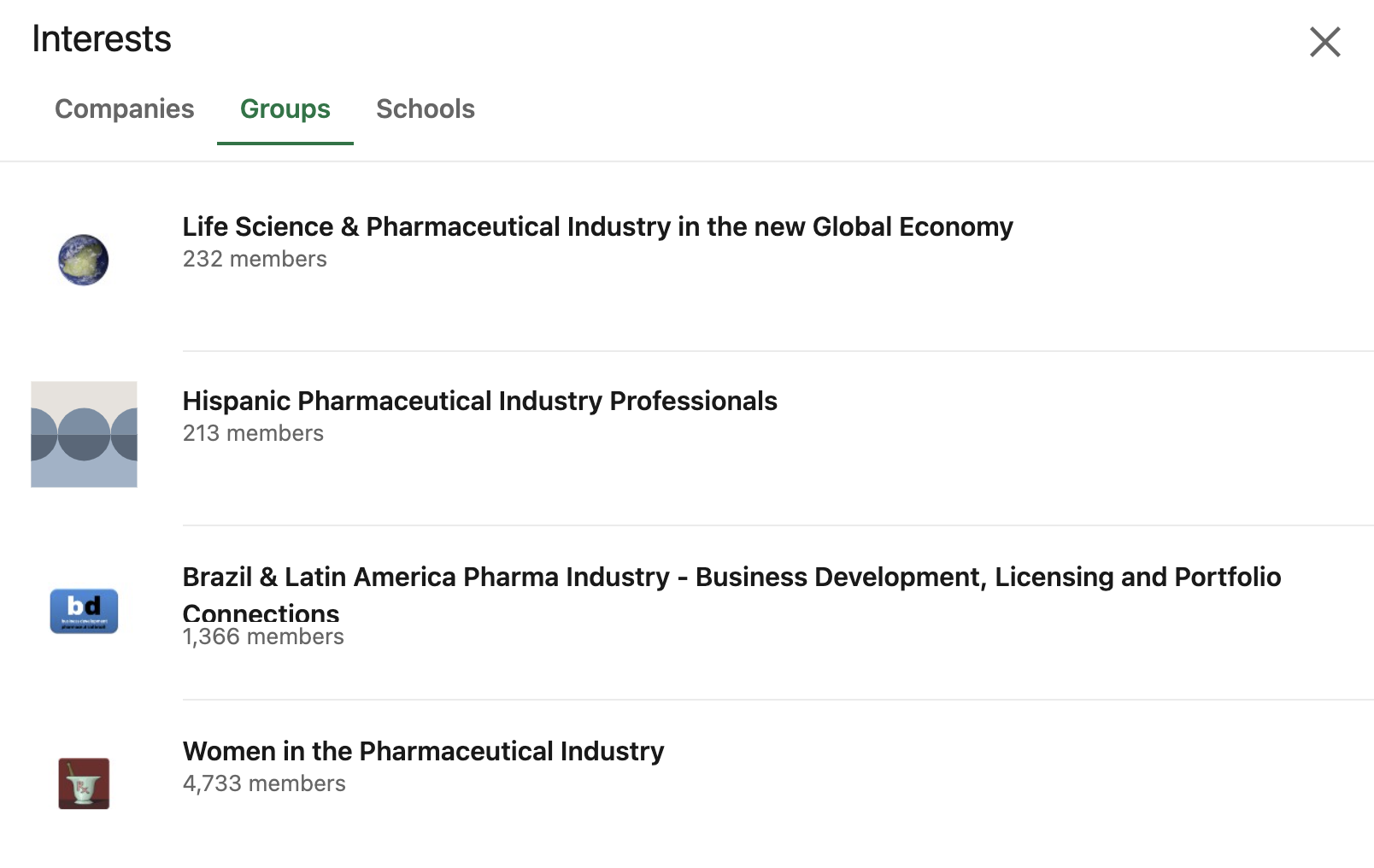LinkedIn Groups: How They Can Help You Meet the Right Clients
LinkedIn Groups are an often overlooked area of the social networking platform that can truly be a gold mine for freelancers for growing their networks and conducting market research.
There's a LinkedIn group for just about anything you can think of. Unlike other social media platforms, these LinkedIn Groups are geared toward professionals with similar interests and fields of practice.
Many people are members of groups within their own profession. For example, most translators I know are members of several LinkedIn groups for translators. The same can be said for interpreters.
So, why are LinkedIn Groups important from a marketing standpoint, and why should you utilize them as part of your LinkedIn strategy?
Simply put, these groups are where you'll find more people who work in the same field or industry you want to serve. People you might not otherwise have the opportunity to meet.
Just as we join groups with other translators and interpreters, professionals in other fields and professions do the same.
So if you really want to meet your clients where they are, making a plan to join and engage in LinkedIn Groups is an excellent way to add to your LinkedIn marketing strategy and get in front of the right people.
How do you find the right LinkedIn Groups to join?
Figuring out which LinkedIn Groups to join is the first step to finding more people who could make great clients. Start by searching for groups where your ideal clients would be.
To do this, ask yourself:
What fields or sectors do they work in?
What kinds of positions do they hold?
Where might they go to network with other people who work in the same field or with the same type of job?
Answering these basic questions should give you an idea of some keywords to search for to find the right groups to join.
Let's take my specialization in translation as an example. My freelance work as a medical and life sciences translator and a health and wellness copywriter gives me the ability to work with clients in several types of organizations and businesses.
If I'm looking to increase my network of clients who work in the area of pharmaceuticals, I would search LinkedIn for a term like "clinical research" The third option allows me to see groups related to this term.
When I click to view the results, I see there are 3,100 matches for groups related to clinical research. Many of them have tens of thousands of members. This is more than enough to keep me busy, but it's still a bit too broad for my purposes.
As I scroll through the groups in the results, I can find some in which I would likely find my ideal clients. However, with that many results, it is often helpful to search for a more specific term.
Here's what I get when I add the position of someone who might be an ideal client to the search term. In this example, I added "coordinator" to the search and chose to see the results for groups.
This turns back 31 results. That's way better than sifting through 3,000+! This more targeted approach allows me to find the people I really want to connect with.
From there, I can look at each group and decide whether I want to request to join it. Here are some of the client-facing groups I've joined on LinkedIn.
You can see that these groups are very specific and niche. This allows me to know I'm not wasting my time joining groups where I won't find ideal clients and networking opportunities.
You can do the same by taking a simple search term, choosing the "Groups" option or filtering only for Groups in the results, and trying to add some specific words to narrow your results. The goal is to end up with a wide range of results but not so many that you'll never have time to get through all of them.
Once you find groups you want to join, you will have to request to join. Since most groups on LinkedIn are closed to the public, you will need to give the group administrator an idea of why you want to join the group. This is an easy step . . . just mention that you work in this field and you are a translator who helps these professionals to communicate, etc.
Most groups that are active will have an administrator who reviews these requests and approves them regularly. Others might be less active and could take much longer to approve requests to join. Either way, this is a long-term game. So be patient and keep joining groups where you might find your ideal clients hanging out!
How do you make LinkedIn Groups part of your marketing strategy?
Now that you know more about strategically searching for and joining groups on LinkedIn where your ideal clients would hang out, you need to think about what you’ll do once you join these groups.
Here are 5 tips to help you work LinkedIn Groups into your marketing strategy:
Network with ease.
People join LinkedIn Groups because they want to be in a community with others who share similar interests, goals, and challenges. Search your groups for conversations where you can add value and continue the discussion.
You shouldn't join a LinkedIn Group with the goal of pitching your business! Instead, by engaging with others, the work you do and how you help your clients will inevitably come up in conversation threads and private direct messages with other group members.
If you join a group that isn't very active after all, try starting a new discussion or thread. Some groups just need a few people to start the conversation to become active again!
Say something of value.
Comment on and like others’ posts in your LinkedIn Groups. Add your perspective on a given topic and mention solutions when people request ideas and feedback. If you can add value to a specific thread, others will note your professionalism, approachability, friendliness, and willingness to help. Inevitably, their engagement with you will make them curious to get to know you better.
If you're concerned about spending too much time on LinkedIn threads, set a timer for 10 or 20 minutes and engage for that amount of time before diving into your paid work. Over time, this will add up to more connections with the right people who see you for the expert you are.
Use posts to connect (not just follow!).
Connecting with others in your group who seem like promising contacts or just great people to know is vital to growing your network with more of the right people—either potential clients or people who can refer you to potential clients.
Send a quick connection request if you want to connect with someone in a group you both belong to by commenting on a post or comment they made.
It can be as simple as "Hi [new connection's name], I see we're both in the same [name of group] Group. I liked your post/comment about [topic of post/comment]. I would love to connect with you here and follow your work."
Of course, you can tweak this message to fit the circumstances, but all you have to do is make the connection.
I prefer to make connections with others versus following them for one very simple reason. If I follow them but don't connect with them, I can see their content and activity, but they are unlikely to ever see mine. Connect > follow!Search for solid leads in the Group’s list of members and connect with them.
I do this all the time. If you look on the right-hand side of the screen when viewing a group you belong to, you will see the option to view the list of members in the group. Expand the list and start skimming.Look for people who have titles and positions that fit your ideal client profile. This will help you figure out who your ideal connections will be from the start.
You can connect with these people right away, mentioning you are in the same LinkedIn Group. Or you can set a Google alert about them or their company or organization so you can share something timely with them when you're ready to connect.
For example, "Hi [new connection's name], I saw that you received an award last week for [achievement]. Congratulations! I see we are in the same [name of group] Group. Would love to connect with you."
Once you're connected, you will see more about this person in your news feed, and they will also see more of your activity and content. Win-win!
Follow up.
It's easy to join client-facing groups, connect with promising group members, and call it a day. But the real connection, the real networking happens when you follow up with people.After you connect with someone, send them a quick message of thanks for connecting and ask them to share a little about what they do or who they serve. Mention that you'd like to keep this information in mind in case you can ever make a referral or connection for them. Don’t ask for anything in return. Simply leave it at that. People will appreciate your openness to offer value without asking them to return the favor. And many times, they will end up returning the favor as a matter of courtesy.
When you see your new connections sharing content on LinkedIn, or if you get a notification about them like a work anniversary, promotion, etc., take a moment to comment or congratulate them. Check in with your connections regularly, and over time, your growing network will repay you tenfold.
By making LinkedIn Groups part of your marketing strategy, you can grow your network with more of the right people. It's wonderful to be connected to colleagues and friends, but if you really want to connect with your ideal clients, LinkedIn Groups is an easy and efficient way to do that.
Want to take a deeper dive into LinkedIn together? Next month, I'll be teaching another session of my LinkedIn for Translators and Interpreters master class for Training for Translators. The class is scheduled for Thursday, October 21 at 12:00 pm NYC time. Participants will receive a recording of the lecture and a copy of my slide deck. Grab your seat and let's make sense of your LinkedIn presence together!


